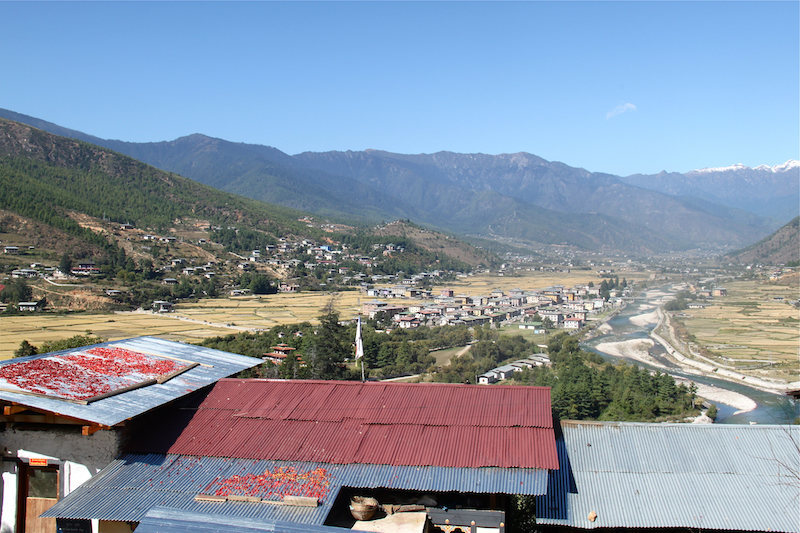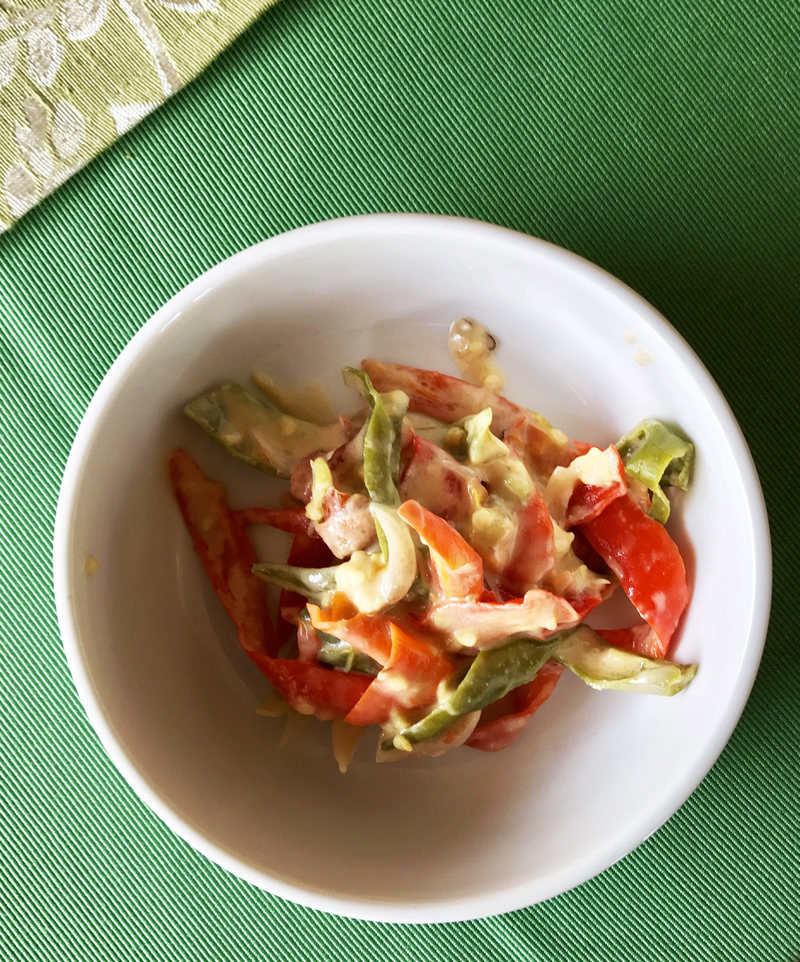
Tucked away in the folds of the Himalayas, Bhutan generally manages to stay under the radar. In the larger world, knowledge about this small Buddhist kingdom-turned-democracy is limited. Bhutan may be best known for its unique Gross National Happiness metric, which is used to measure the welfare of its citizens in lieu of traditional economic measures.
For foreigners who visit, the country’s mountain landscapes prove memorable. But another unique aspect of Bhutan stands out: the Bhutanese’s extravagant love of chili peppers.

Bhutan’s summer markets are a feast for the senses. Young women in colorful kira dresses sell Buddhist masks, Tibetan prayer bowls, and good luck charms. Older women hawk bundles of hard chhurpi cheese, while housewives sift through dozens of varieties of red rice. And at every stall, there are huge piles of green and red chili peppers, with the occasional yellow pepper peeping through.
This abundance of chili peppers isn’t just found at markets. Shops in Bhutan feature heaps of spicy peppers, and along Bhutan’s hilly roads, you’ll see red chilies laid out to dry on rooftops like scarlet carpets or hung out on balconies like misshapen curtains. And in the valleys of rural Bhutan, during festivals and prayer rituals, the pungent odor of burning chilies floats in the air, along with the sounds of prayer bells and hypnotic chants.

The result is a food culture defined by chili peppers, which are used more like a vegetable than a spice or condiment.
Given Bhutan’s proximity to India and China, influences from both countries’ cuisines (especially Tibetan) are strong. Yet Bhutan’s national dish is unique: ema datshi, a stew of equal parts chili peppers and soft cheese, along with onions and tomatoes. Ema datshi is present at every main meal of the day, with the chili peppers—usually green and sliced lengthwise—carrying a spice hit that even the cheese cannot soften.Ema datshi is the star of Bhutanese cuisine, and while many variations feature potatoes (kewa datshi), beans (semchung datshi), or mushroom (shamu datshi), there is always a generous sprinkling of chilies. Chef Sonam Tshering, culinary instructor at the Royal Institute for Tourism and Hospitality, says that all Bhutanese curries contain chilies in copious quantities. Another dish easily found in Bhutanese homes is ezay, a coarse chili dip eaten at breakfast.

Culinary experts say that the most likely reason for chili peppers’ predominance in the Bhutanese diet…
The post Decoding Bhutan’s Love Affair with Chili Peppers appeared first on FeedBox.